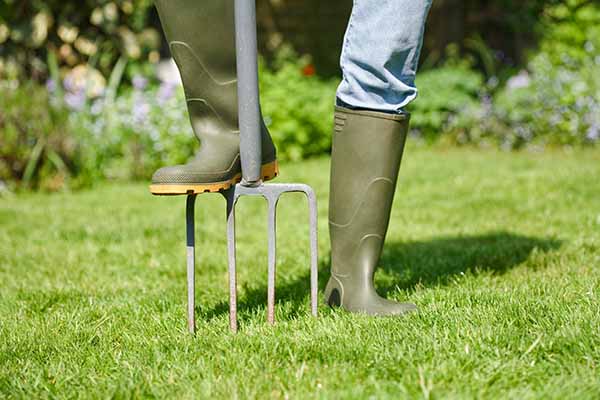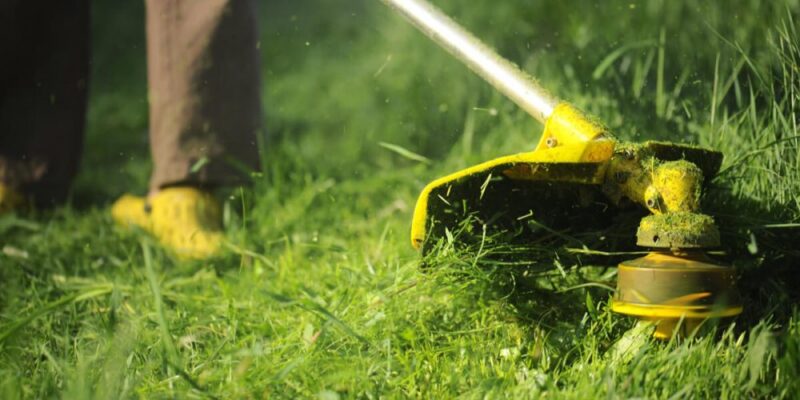Key Takeaways:
In the challenging climate of Dallas, TX, where dense clay soils and extreme weather conditions prevail, lawn aeration emerges as a critical practice for maintaining a healthy lawn. It improves soil compaction, enhances nutrient absorption, and supports robust root growth, thereby combating issues like heat stress, drought, and diseases.
Why Lawn Aeration Is Crucial for Dallas Lawns
Lawn aeration is a vital component of lawn care in Dallas, TX, often overlooked despite its significant benefits. It alleviates soil compaction, facilitating better air, water, and nutrient penetration to the roots, essential for sustaining a lush, vibrant lawn in the region’s challenging conditions.
Benefits of Lawn Aeration
- Soil Decompaction: Aeration breaks up compacted soil, allowing roots to expand and strengthen.
- Enhanced Nutrient Uptake: With better air and water flow, roots absorb nutrients more effectively.
- Improved Resistance: Aerated lawns are better equipped to handle environmental stresses such as heat and drought.
Optimal Timing for Aeration in Dallas, TX
Timing is crucial for aeration success. In Dallas, the best times are late spring and early fall, coinciding with the area’s primary growth periods for warm-season grasses. This timing ensures the grass can recover quickly and capitalize on the favorable conditions for growth.
Understanding Dallas’s Growing Seasons
Dallas is home to predominantly warm-season grasses such as Bermuda, St. Augustine, and Zoysia. These grass types actively grow during the warm months, making late spring and early fall ideal for aeration.
Effective Lawn Aeration Techniques
Core aeration is the most effective method in Dallas, TX. It involves removing small cores of soil from the lawn, which helps relieve compaction more effectively than spike aeration.
How to Properly Perform Core Aeration
- Prepare Your Lawn: Mow your lawn to a lower height and ensure it’s hydrated a day before aerating.
- Aerate: Use a core aerator to remove plugs of soil, covering the area evenly, especially focusing on compacted sections.
- Post-Aeration Care: Leave the extracted soil plugs on the lawn to decompose naturally, adding nutrients back into the soil.
Addressing Common Lawn Problems with Aeration
Aeration is particularly effective in combating several prevalent lawn issues in Dallas:

- Thatch Buildup: Aeration helps break down thatch, a layer of dead organic matter that can suffocate grass if it becomes too thick.
- Water Runoff: Poorly aerated lawns often suffer from water runoff during heavy rains. Aeration improves water absorption.
- Patchy Grass: By improving root health, aeration encourages denser, more uniform grass growth.
Environmental Benefits of Aeration
Aerating your lawn contributes to a healthier environment by:
- Reducing Runoff: Enhanced soil structure from aeration decreases runoff, which can carry pollutants into waterways.
- Promoting Biological Activity: Aeration increases oxygen in the soil, promoting healthier microbial activity that naturally enhances soil fertility.
Seasonal Lawn Care Tips for Dallas, TX
To maximize the health and appearance of your lawn throughout the year, consider these seasonal care tips:
Spring
- Begin Regular Mowing: Start the season with sharp blades and adjust the cutting height according to your grass type.
- Fertilize Appropriately: Apply a spring fertilizer to kickstart growth after the dormant winter months.
Summer
- Water Efficiently: Implement deep, infrequent watering early in the morning to reduce evaporation and promote deep root growth.
- Manage Pests: Keep an eye out for signs of pests or diseases and address them promptly to prevent widespread damage.
Fall
- Prepare for Dormancy: Aerate and overseed your lawn to repair any damage from the summer and prepare it for the winter dormancy period.
- Apply Fall Fertilizer: A late-season fertilizer can help strengthen roots for the colder months ahead.
Winter
- Reduce Foot Traffic: Keep off the grass as much as possible when it’s dormant to avoid damaging the turf.
- Monitor Moisture Levels: Although watering needs decrease, ensure the lawn doesn’t dry out completely.
Conclusion
Lawn aeration in Dallas, TX, is a critical practice for anyone looking to maintain a healthy, resilient lawn. By understanding the best practices, optimal timing, and the benefits of aeration, homeowners can effectively enhance their lawn’s health and vitality. Embrace these guidelines to ensure your outdoor space remains a beautiful and inviting extension of your home throughout the year.













Comments